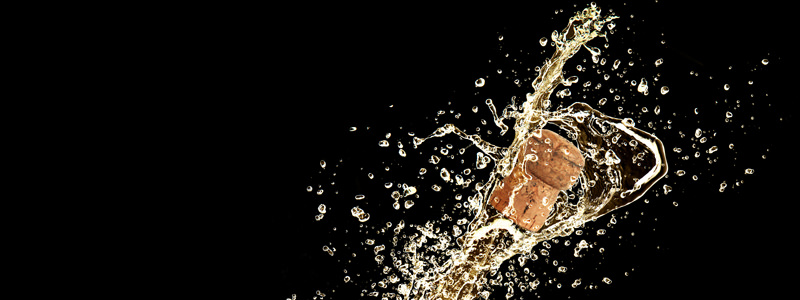It’s the season of bubbly, for wine drinkers among us anyway (for others, it’s the season of unapologetically creamy hedonism, AKA ‘nog time). But for those out there poppin’ bottles this December and January (and why not February, February’s a little depressing and useless), a few questions arise as we do our bubbly buying. Number one, why do you only get to have it a few times a year? Number two, are there any cool Champagne terms you can bust out in the middle of dinner conversation? And number three, what are “blanc de blancs,” “blanc de noirs,” and can you just drink all of the above?
Yes, you can drink all of the above, but it’s good to know what’s what, and not just to keep your holiday party wine chat going strong. If your high school French hasn’t failed you yet, you may already know that “blanc de blanc” and “blanc de noir” literally translates into “white from white” and “white from black.” Besides (probably) being a Yoko Ono poem, this is just a handy way to indicate the grapes used to make your Champagne.
Champagne is a white sparkling wine, but it can be made from darker grapes. In fact, that’s the norm in the Champagne region. The three main grapes used in Champagne production are Pinot Noir, Pinot Meunier, both “black” grapes, and Chardonnay, a light-skinned grape. (Pinot Gris, Pinot Blanc, Arbane, and Petit Meslier are also permitted, but make up a fraction of the planted vineyards.) The dark-skinned grapes are simply pressed gently to keep the skins from bleeding into the juice, the skins separated out quickly.
In a blanc de blancs Champagne, only light-skinned grapes are used, typically 100% Chardonnay, though there is a small subsection of producers making Champagnes either entirely or partially from the lesser-known grapes. Blanc de noirs Champagnes are made with Pinot Noir and/or Pinot Meunier, and while the look of the Champagne might be fairly similar, the use of different grape varietals means a blanc de blancs will taste very different from a blanc de noirs, and a blanc de noirs could also taste extremely different from another blanc de noirs.
Generally speaking, a blanc de blancs will be a bit lighter and dryer, while blanc de noirs will showcase a bit more body and fruity fleshiness. A blanc de noirs made entirely from Pinot Noir will have a bit more robustness than one made from a mixture of Pinot Noir and Pinot Meunier. At the end of the day there are many variables beyond grapes that determine what a bottle tastes like. Bottles of 100% Chardonnay blanc de blancs from two different producers could taste significantly different (within the context of a bright, dry Champagne, anyway). And then there are producers making blanc de blancs without any Chardonnay at all. You’re less likely to encounter that, unless you’re a big Champagne drinker seeking out new bubbly experiences, so your best bet is to try semi affordable bottles of each and see where your palate feels happiest. It’s Champagne, so chances are, all of the above.

